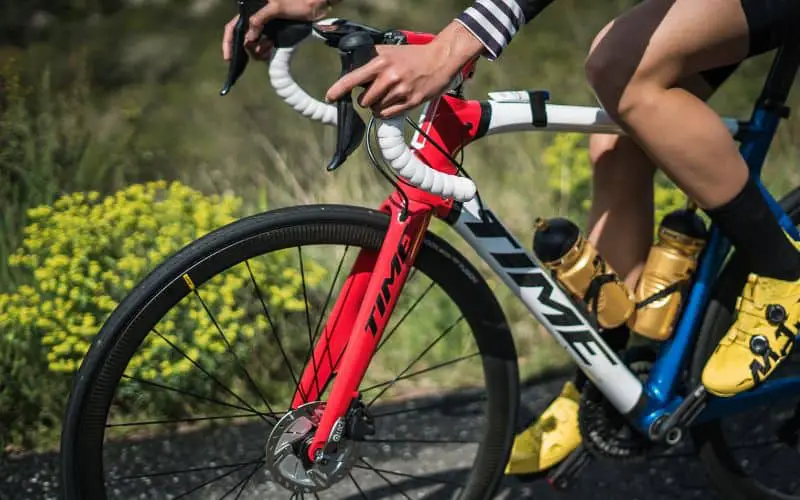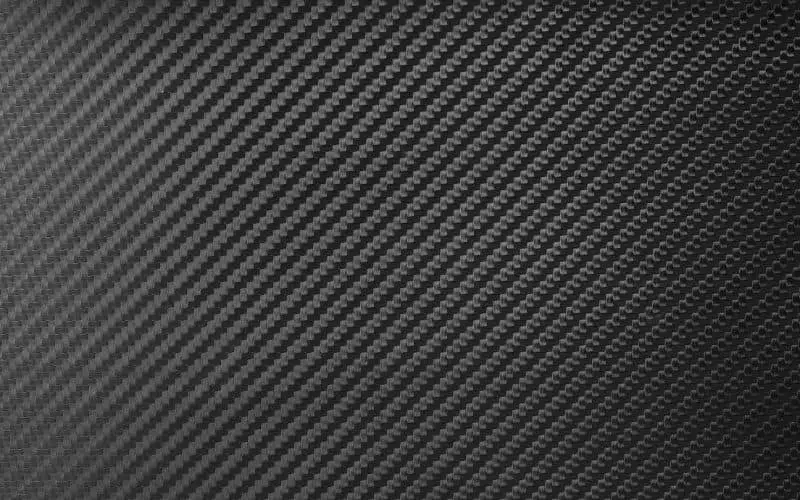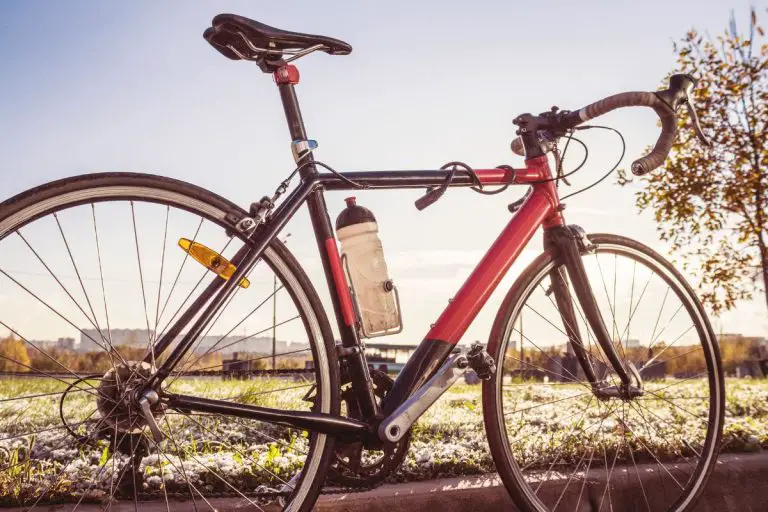Every cycling enthusiast eventually reaches a stage where they become fanatical about biking. Usually, buying a new accessory or piece of gear becomes a necessity as the hobby takes over.
That could be adopting the lycra clothing on your morning trip to work to avoid nasty sweat stains on your suit. Or attaching lights and wearing neon at night after a close call with a Ford truck. Some things are just unavoidable from buying.
You get to the point where your purchasing has no curtail. Eventually, you are on a first-name basis with the owner of your local bike shop. Been there, done that!
It suddenly gets to the stage where you seem more comfortable in lycra than pajamas and that it is just second nature to be biking. After all, you do not don the lycra; the lycra dons you.
All kidding aside, if you are just starting out pursuing cycling as a hobby, you have likely run into the issue of a ding or scratch on your bike and are concerned. Most amateur cyclists ride aluminum bikes because they’re cheaper and more abundant. However, those bikes deteriorate much faster than the other three main alternatives. Those being carbon, steel, and titanium.
Recently, within the past 30 odd years, shop owners and bike manufacturers have pushed carbon bikes to amateurs. After all, carbon bikes are known to last very long and that there are highly resistant to damage.
Just how long do carbon bike frames last? Read this article to find out.
Carbon Bike Frames Can Last For An Extremely Long Period Of Time
From personal experience, carbon bike frames can last for almost an infinite amount of time if you keep your bike well-maintained. However, most professionals say you should replace your carbon fiber bike frames every seven to ten years.
This will be based on how you maintain them. It also depends on the resin used to protect your bike; lower-range carbon fiber bikes are more susceptible to wear and tear and resin degradation.

The Four Tiers of Carbon Fiber Bike Frames
Many factors determine how long your carbon fiber bike frame lasts. However, nothing matters as much as quality and build.
Simply put, a bike that isn’t built right is doomed to fail. Bikes built by the industrial titans, like Cannondale, Trek, and Bianchi, are standardized to a T.
The resin in their bikes is set correctly and is balanced with the carbon fiber. There is no issue with their carbon fiber sourcing, so quality is consistent, and there are minimal air bubbles.
Under this impression, carbon fiber bike frames can be broken up into four levels. Standard, intermediate, high, and ultra-high modulus.
Standard Modulus
To simplify technical terms, modulus refers to the stiffness of the carbon fiber. Tensile strength refers to the stretchiness of the carbon fiber.
Modulus is measured in MSi and GPa. Tensile strength is measured in ksi and MPa. Different carbon fiber bikes are ranked and priced accordingly based on these two qualities. It is important to note that there are pros and cons to each of the four levels of bike frames.
Standard modulus carbon frames have the lowest tensile strength and modulus. Standard models use the lowest grade of carbon fiber and are heavier than the three other levels. However, standard models are less brittle and expensive.
This means you don’t have to be as careful when upkeeping or storing the bike.

Intermediate Modulus
Intermediate modulus carbon fiber bikes are the middle-of-the-road option out of the four levels, which isn’t inherently a bad thing.
Intermediate modulus carbon fiber has a higher modulus and tensile strength than standard modulus carbon fiber. This results in a lighter and more flexible frame. Although intermediate modulus bikes are more expensive than standard models, the price differential isn’t too significant, especially considering the difference in quality.
Related article – Best Carbon Road Bikes Under $2,500
High Modulus
High-modulus carbon fiber bikes often have double the amount of carbon fiber used than intermediate bikes. This means that the tensile strength and modulus are much higher than the previous two alternatives.
High and ultra-high-modulus bikes are much more expensive than standard and intermediate models. Not only that, they are more prone to breaking. For this reason, high and ultra-high-modulus carbon bikes are not recommended to people new to cycling.
Ultra-High Modulus
Ultra-high modulus carbon fiber frames are the least stiff and are, therefore, the most brittle. These bikes are highly flexible and lightweight, but that comes at the risk of being broken more easily.
Ultra-high modulus carbon fiber frames are the most aerodynamic and come in the most custom shapes.
Think Tour De France riders here!
The Sun – The Mortal Enemy of the Carbon Fiber Bike
The quality and build of the carbon fiber is only one factor to consider when determining how long a carbon bike frame will last.
When the outside epoxy resin deteriorates, a carbon fiber bike breaks a lot easier on impact. The epoxy resin is where the carbon fiber is suspended. There is only one way for this to happen: sun or UV exposure.
Bike manufacturers try to skate around this issue by putting UV-resistant paint on their bikes, but this is a temporary solution.
Every time you collide with something on your bike or set your bike down next to something rough, you risk chipping the paint off. Over time, paint starts to fade on your bike, and there is only so much you can do asides from replacing the paint.

What Damages A Carbon Fiber Bike Frame?
Freshly made carbon fiber bike frames have high tensile strength and are very flexible. However, once on store shelves or the road, these bikes are not nearly as flexible as their metal counterparts. The degradation on a carbon fiber frame is much more pronounced than on its metal counterparts.
Flexibility is vital for bikes because it means that a bike frame can absorb some of the impacts of a collision.
That being said, bike engineers do try to make carbon fiber bikes to deal with everyday impacts. Carbon fiber is flexible and easy to manipulate before being immersed in epoxy.
This means that if you have to deal with a couple of potholes, extended manhole covers, and cracks in the road on your way to work, a carbon fiber bike will be more balanced and structured to deal with the impact of it than metal bikes.
That being said, carbon fiber bikes are less resistant to crashes and falls than metal bikes. Carbon fiber bikes are known for always being stiffer than metal bikes. This means you can put more weight and pressure on metal bikes without being fearful of the bike snapping.
Depending on the build of your carbon fiber bike, one good ding or crash can totally wreck your bike. However, metal deteriorates at a faster rate than carbon fiber. Furthermore, both kinds of bikes can be repaired relatively easily, especially carbon fiber, as long as the damage is in a reasonable place.

What Should I Do To Maintain My Carbon Fiber Bike?
Given carbon fiber bikes’ range of customizability, it is important to check the user’s manual for more information about your specific model. Carbon fiber bikes have different weak points depending on their build, and those areas should be given the most attention.
If you see any cracks, especially in integral points that are known to be stiff, like the chainstay and top tube, bring your bike to a repair shop.
As long as you don’t wait too long, carbon fiber bikes are fairly easy to repair with some Pre-Preg (Carbon Fiber Sheets), a chiseling tool – to break off significantly damaged areas, and a new coat of paint.
Always take extra precautions when getting off your bike and storing it. If you are tightening or cleaning your bike, do not put excess pressure and weight on any part of it.
Related article – Bike Storage Solutions For Apartments

